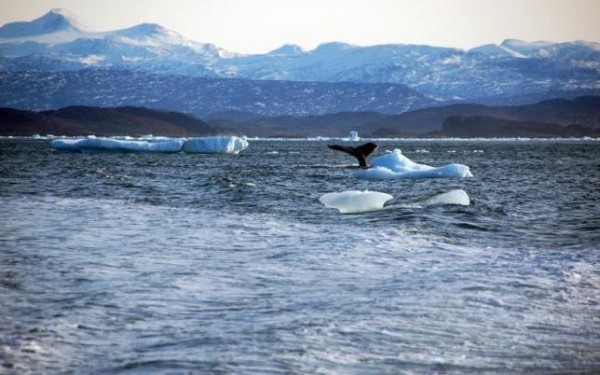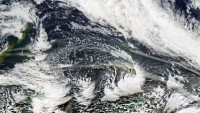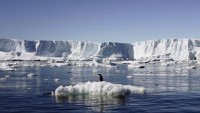Latest NASA Satellite Images Show Massive Ice Loss in Arctic Sea
| Benjie Batanes | | Sep 16, 2015 09:40 AM EDT |
(Photo : Reuters/Alistair Scrutton) Scientists have warned that the rapid loss of ice in the Arctic could lead to environmental problems as well as the loss of some unique animal species.
Images of the Arctic Sea taken from space on September 11 by NASA satellites show massive ice loss. The ice deposits in that area helps to cool the earth's temperature by deflecting the sun's heat away from the planet.
The ice in the Arctic melts, however, grows back again depending on the season. Scientists have observed that Arctic sea ice deposits continues to get smaller every summer. The normally thick and solid ice in some areas have now been split into several smaller parts and quickly melts as soon as it encounters warm waters.
Like Us on Facebook
NASA announced that the declining ice in the Arctic Sea started 19 years ago and experts are unsure if the region would recover from the massive loss of ice. As of September 11, the ice formation in the Arctic Sea totals around 4.4 square kilometers. In September 2012, when the Arctic ice was at its lowest, it measured only 3.4 square kilometers.
In previous years, the ice formation has recovered to its former size but scientists are less hopeful this year.
World Wildlife Fund spokesperson Margaret Williams told USA Today that humans' increasing use of fossil-based products is to blamed for the seemingly irreversible ice loss in the Arctic Sea. The area is a host to some unique animals such as the polar bear and walrus.
September is usually the time of year when the ice formation in the Arctic sea is at its lowest. Much of the ice that melted in the summer is expected to be recovered when winter comes in. By March, the Arctic ice volume is usually at its peak.
The National Oceanic and Atmospheric Administration believes that the increasingly warm earth temperature caused primarily by carbon emissions is the main culprit in the steady ice decline. Mark Serreze, NOAA spokesperson said that unless the Arctic sea ice loss is reversed, future human generations may no longer get a chance to see the ice formations in the Arctic Sea.
On the other hand, sea travel across the Arctic Sea would become easier as the ice would no longer block much of the way.
TagsArctic sea, Arctic Ice, arctic ice summer extent, global warming, Carbon emissions, Greenhouse Gas, greenhouse effect, NASA satellite, arctic basin
©2015 Chinatopix All rights reserved. Do not reproduce without permission
EDITOR'S PICKS
-

Did the Trump administration just announce plans for a trade war with ‘hostile’ China and Russia?
-

US Senate passes Taiwan travel bill slammed by China
-

As Yan Sihong’s family grieves, here are other Chinese students who went missing abroad. Some have never been found
-

Beijing blasts Western critics who ‘smear China’ with the term sharp power
-

China Envoy Seeks to Defuse Tensions With U.S. as a Trade War Brews
-

Singapore's Deputy PM Provides Bitcoin Vote of Confidence Amid China's Blanket Bans
-

China warns investors over risks in overseas virtual currency trading
-

Chinese government most trustworthy: survey
-

Kashima Antlers On Course For Back-To-Back Titles
MOST POPULAR
LATEST NEWS
Zhou Yongkang: China's Former Security Chief Sentenced to Life in Prison

China's former Chief of the Ministry of Public Security, Zhou Yongkang, has been given a life sentence after he was found guilty of abusing his office, bribery and deliberately ... Full Article
TRENDING STORY

China Pork Prices Expected to Stabilize As The Supplies Recover

Elephone P9000 Smartphone is now on Sale on Amazon India

There's a Big Chance Cliffhangers Won't Still Be Resolved When Grey's Anatomy Season 13 Returns

Supreme Court Ruled on Samsung vs Apple Dispute for Patent Infringement

Microsoft Surface Pro 5 Rumors and Release Date: What is the Latest?













